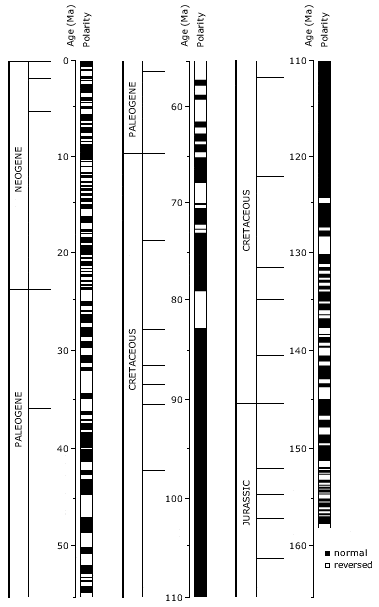
We’re told as kids that a compass will always point north, but that’s not exactly true. A compass points to the North Magnetic Pole, not to the North Pole. The two are currently fairly close, so it’s a good approximation, but it’s not always like this.
The magnetic poles have flipped multiple times in history, approximately once every 300,000 years, though the period isn’t fixed. Researchers suspect a reversal may happen relatively soon. The last flip took place 780,000 years ago, and 41,000 years ago, the poles got significantly weaker, but never really flipped. Now, researchers studying a magnetic anomaly in the South Atlantic shed new light on this process.
The Earth is a big magnet
The Earth’s magnetic field is generated by the outer core. This outer core is fluid and consists mostly of iron and nickel, constantly moving and convecting, essentially acting like a dynamo that produces a magnetic field. In a sense, the Earth is just one big magnet.
We’re very lucky this happens: this magnetic field protects the earth by deflecting most of the solar wind. Without this protection, the solar wind would strip away most of the ozone layer, rendering our planet vulnerable to harmful radiation from the sun.
The Earth’s magnetic field isn’t uniform. Some areas have a stronger field, which offers extra protection, while some areas with a weaker field are somewhat vulnerable. A good example of the latter is a large and growing anomaly in the South Atlantic Ocean. The South Atlantic Anomaly has a magnetic field so weak that it’s as if you were flying in the ionosphere, hundreds of miles above the surface.
The South Atlantic Anomaly is a topic of interest for scientists, not just because they’re not sure how it came to be, but also because it poses real risks for space equipment. If it’s somehow connected to an upcoming pole reversal, it would be even more important to understand. But according to a new study, the anomaly has been there for a very long time — millions of years, in fact.
The new study suggests that the South Atlantic Anomaly isn’t a new phenomenon indicative of an upcoming pole reversal. Lead author of the paper, University of Liverpool Ph.D. student Yael Engbers, explains:
“Our study provides the first long term analysis of the magnetic field in this region dating back millions of years. It reveals that the anomaly in the magnetic field in the South Atlantic is not a one-off, similar anomalies existed eight to 11 million years ago.
“This is the first time that the irregular behaviour of the geomagnetic field in the South Atlantic region has been shown on such a long timescale. It suggests that the South Atlantic Anomaly is a recurring feature and probably not a sign of an impending reversal.

Magnetic field, frozen in rocks
You might be wondering how we could possibly know what the magnetic field was like millions of years ago. The answer to this, and the question of how we know about magnetic pole reversal, lies “frozen” in rocks.
When volcanic or igneous rocks cool down, the minerals that form them slowly solidify. Minerals that are rich in iron and easily magnetized tend to align themselves on the magnetic poles. Like a compass, these minerals point to the direction of the magnetic North-South line — but only when they cool down. After they’ve solidified, they no longer change this alignment, they stick to the original. So if we date these rocks, we can know how this North-South line went. By analyzing how well these minerals aligned to the field, we can also deduce the strength of the magnetic field.
Using this information, geologists build time charts depicting the normal and reversed polarity, using black and white as below.

In this research, the team analyzed rocks from 34 different volcanic eruptions from Mount Saint Helena (not to be confused with St. Helens). These eruptions took place between 8 and 11 million years ago and highlight a similarly weak magnetic field in the area. In other words, the anomaly was still there 11 million years ago. Engbers says that this suggests no connection to an impending pole reversal, but this could help us better understand how the Earth’s field is produced by geological activity.
“It also supports earlier studies that hint towards a link between the South Atlantic Anomaly and anomalous seismic features in the lowermost mantle and the outer core. This brings us closer to linking behaviour of the geomagnetic field directly to features of the Earth’s interior”
The study has been published in PNAS.



